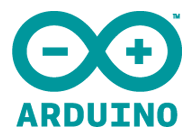My set up consist of an LCD display which is contained in the Arduino Starter Kit. You can easily program it with the LiquidCrystal Library.
Connecting LCD Display
The hardware set up is really simple
LiquidCrystalLog
Now we are ready to use the LCD display as a logger. In the LiquidCrystalLog.h file you can find a concrete implementation of the class AbstractLog.
You can also find a new example, called vect3d_LiquidCrystalLog. As you can see, the original source code has not beeing modified, except for the log variable: it's now a LiquidCrystalLog type variable.
Here's a video of the new loggerYou can also find a new example, called vect3d_LiquidCrystalLog. As you can see, the original source code has not beeing modified, except for the log variable: it's now a LiquidCrystalLog type variable.
You can write every type of logger, SD Card logger, Bluethoot logger, RF logger and so on.




